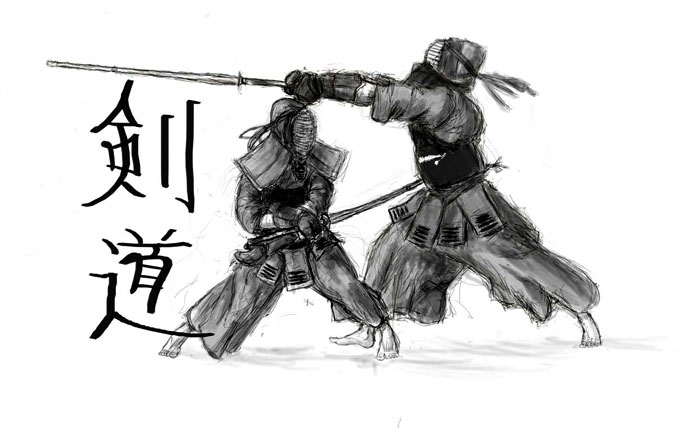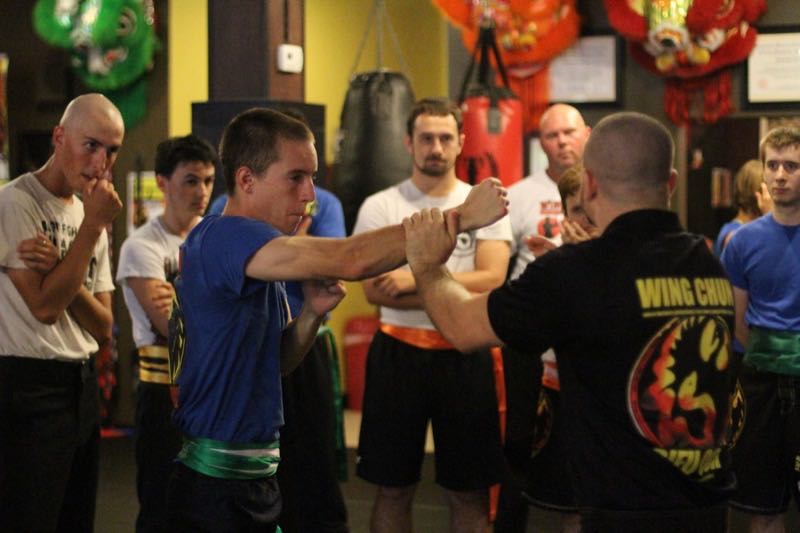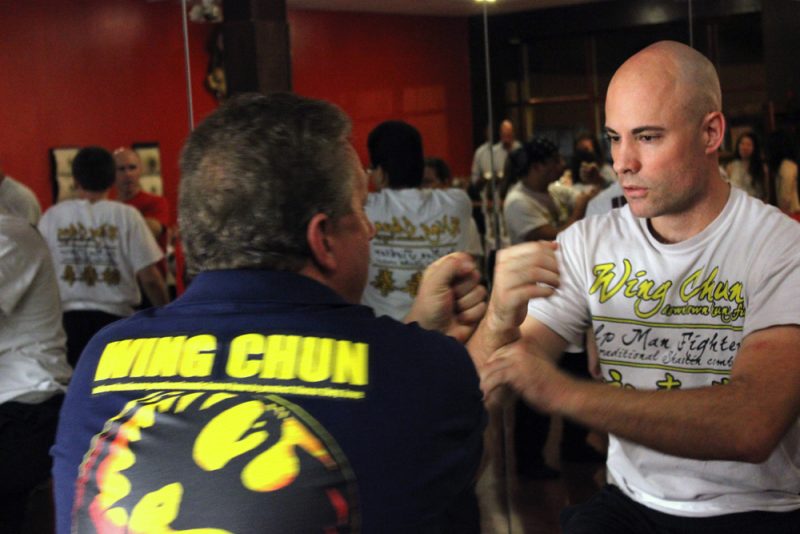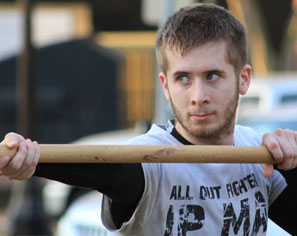Everyone’s physical capabilities are different, whether it be size, strength, speed, or overall fitness level. There are strengths and limitations each of us has compared to the next person. So it’s important when searching for self defense programs to take these differences into consideration. How do you find the right program? Choosing self defense programs, and some red flags to keep an eye on.
Do the self defense program focus on real world applications or “the art”?
This is the biggest distinction from one martial arts school to the next. Especially when it comes to self defense in particular. Many martial art schools focus on what people commonly know as training for “the art” or “philosophy” of martial arts.


This is appropriate for students looking for mental wellness and even to increase their fitness. Not for those seeking real world self defense applications. Gyms that focus on “the art” tend to heavily focus on forms. Choreographed attacks, individual training (not against or with partners), and the theory behind the martial arts.
Discover the Best Self-Defense Programs Near You Today!
Those interested in real-world fighting applications and self defense techniques. To find what you can actually use, there are a few indicators to look out for. The biggest one is do they encourage sparring, and does the sparring actually utilize the techniques the instructors are teaching?


Many times people default to basic boxing or MMA techniques when in a sparring scenario. That’s useful, but do they teach those techniques in the program?
How to Choose the Right Self-Defense Program for Your Needs
Usually a good indicator that the self defense training is quality stuff. It’s actively used in sparring sessions, which then translates to use “IRL” if a student ever needs it in a real fight. The key is muscle memory. Does the program teach techniques that become instinctual and usable when in real-world fighting scenarios.


Another thing to look out for is versatility. This means, does the program focus on training for multiple scenarios? Does the self defense program focus on a single vs multiple attackers? What should you do if you’re grabbed or shoved? Does it prepare students for what to do when faced with an attacker who has a knife or a gun?
All of these scenarios are very common in fights. Any self defense programs you decide to go with offers versatility and mixes up the training regime. To make sure students are confident and well-rounded enough to tackle whatever may come their way.

What measures ensure safety and prevent injury in the self-defense program?
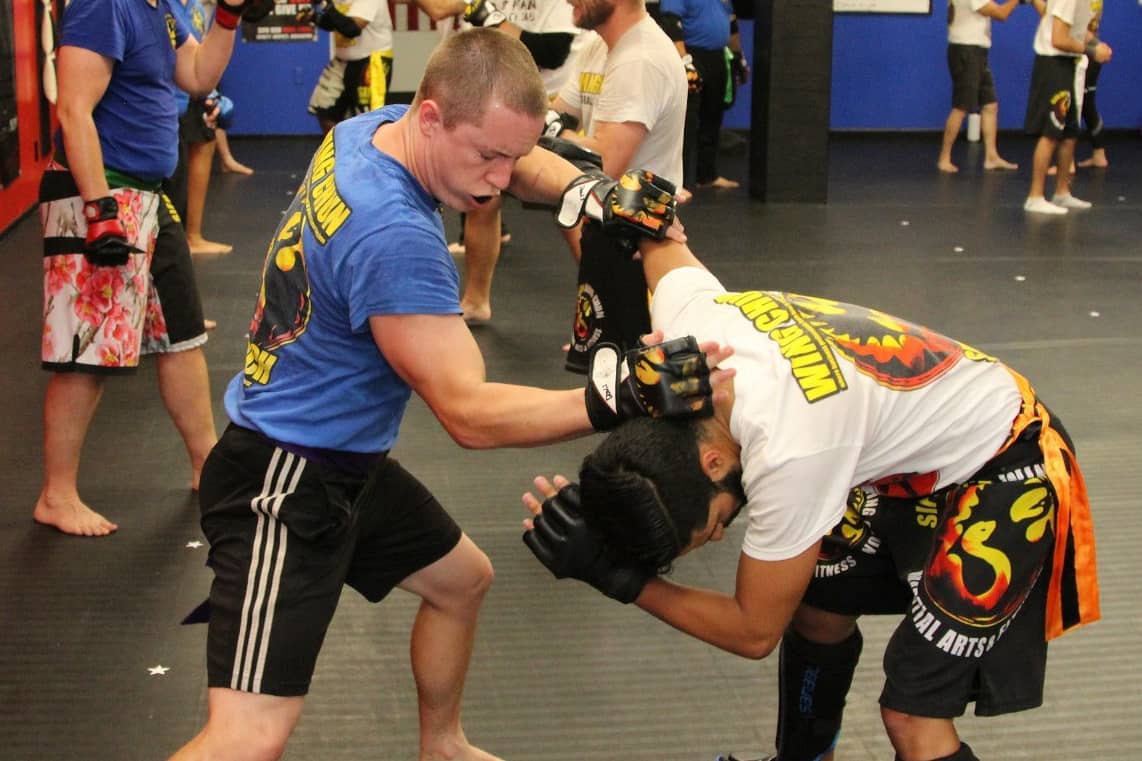
Training practical skills for self defense can be dangerous. While most instances won’t be especially harrowing. It’s important to recognize that any self defense training program does come with its own sets of risks and potential to cause injury. When searching for self defense classes near you. It’s important that the instructors know how to keep people safe.
They put measures in place to keep students from injuring themselves or each other.
Is safety gear required when sparring or facing an opponent in class? Common pieces of equipment include padded gloves, mouthpieces, helmets, shin guards, arm guards, and chest guards.


This will change depending on the type of program you join. The basics (gloves and mouth-pieces) are a bare minimum must-have when training in self defense.
Master Self-Defense: Find the Best Classes Near You
Do instructors moderate and monitor fight training to make sure the focus is on building skill? Oftentimes sparring can devolve into “beating” the opponent by any means necessary. This mentality usually creates bad and dangerous habits. It’s important that an instructor moderates training sessions to make sure attacks are gratuitously hard, hazardous, or incorrectly utilized. This is not only to teach good habits/skills but to prevent students from injuring themselves or each other. When looking for a self defense program near you. Make sure the instructor(s) are active on the training floor at all times.

Are there students who have been training for more than a year?
This is generally just a green flag to look out for. Similar to a job, if there’s a high turnover rate of people, that’s usually a sign that something is wrong. When finding a self defense program near you. Take the opportunity to check the place out prior to joining. Watch a class, or join a trial period to learn about the training environment. See how instructors teach, and more importantly, talk to other students.
See what they have to say about their training journey. About other students, how the instructors have taught them. You could even get training tips. A sign of a good teacher is when students have the ability and willingness to teach those junior to them.

If someone has been training at a place for more than a year. They should have acquired enough skill in self defense to be able to actually use the techniques. They’ve been taught and are well past the “basics” stage. This can be a good way to gauge on where your skill level might be. If you decide to stick with that program and provide you with a nice aspirational goal to work towards.
Are the instructors approachable and willing to answer your questions?
While the social aspect isn’t a make or break quality for good self defense classes. It’s important that an instructor be willing to answer your questions and address concerns. Do they feel approachable and non-judgmental? Are they patient and showcase a desire to really answer your questions?


Like learning any skill, there will be times where you’ll get stuck, frustrated, or struggle. With a particular technique and it’s important that you feel comfortable talking to your instructor not only in regards to training.
Your overall health and wellness since these are aspects very closely intertwined with self defense training. A good instructor will not only recommend things to improve your self defense skills. Many are also well versed in overall fitness training, food & diet programs, recovery/injury management, and all things fitness related.

Do you feel comfortable training with the other students?
While the quality of the training program is the top priority, the social atmosphere is a close second. It’s important that you feel relaxed, comfortable, and open. To engaging with the students on the training floor as they’ll be a great resource for working through similar struggles. Overall just a great sense of camaraderie.

Why Local Self-Defense Programs Matter: Find Yours Now
The gym, and any sort of fitness class can be intimidating to start, so knowing that the people you’ll be training with are open and judgment free can go a long way in making your training journey a lot smoother and stress free. Depending on their own training journeys, your fellow students could be a great resource in overcoming issues, techniques you might be struggling with, fitness hurdles, or even just a buddy to hit the gym with.
A good gym/martial arts studio will foster a social atmosphere that encourages connection and removes ego from the training process. When looking for a good self defense program near you, see how the students interact with each other, and with new/potential students just coming into class. The social environment will be a good indicator on the potential longevity for you training in a particular place.
Find the Best Self-Defense Training: Options Near You!
While these aren’t the end-all-be-all signs to look for, it is important to keep some of these questions in mind when looking for self defense programs near you. There are many gyms out there looking to make a quick buck, or martial art studios that don’t focus on real-world applications, so it’s important to find a balance when choosing the right program for you.
If you’re interested in getting started, we here at Sifu Och Wing Chun offer self defense training, kickboxing & fitness, for kids and adults. We know it’s important to make sure the training program is a good fit, so feel free to get in touch and get started with our limited 2-week trial offer. We hope to be the place you call home for your fitness and self defense training journey.























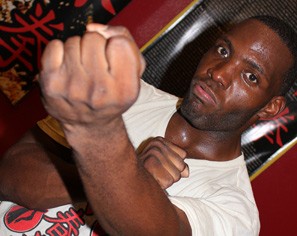












 Where does one begin divulging the effervescent determination surrounding my growth in Wing Chun under the Sifu Och lineage. As well as the growth in myself. Ultimately the scrupulous truth would be in my young age of six when I as many martial artist has divulged found my passion for martial arts watching Enter the Dragon featuring Bruce Lee.
Where does one begin divulging the effervescent determination surrounding my growth in Wing Chun under the Sifu Och lineage. As well as the growth in myself. Ultimately the scrupulous truth would be in my young age of six when I as many martial artist has divulged found my passion for martial arts watching Enter the Dragon featuring Bruce Lee. Fast forward to the important part, the year 2009 when the film Ip Man was released in the united states red box system, I was helping my grandpa move when he out of kindness decided to rent a movie for me and my brother. He casually strolls in and I will never forget what he said “you Know you guys have worked real hard and I wanted to show a small gesture of appreciation, I know you both love martial arts so I saw a film on Bruce lee’s master in red box and thought it would be interesting for you to check out.”
Fast forward to the important part, the year 2009 when the film Ip Man was released in the united states red box system, I was helping my grandpa move when he out of kindness decided to rent a movie for me and my brother. He casually strolls in and I will never forget what he said “you Know you guys have worked real hard and I wanted to show a small gesture of appreciation, I know you both love martial arts so I saw a film on Bruce lee’s master in red box and thought it would be interesting for you to check out.” In my years of martial arts fanaticism and study I have trained in my styles of course seeing as I have landed in Sifu Och Wing Chun never were for very long. The complete breakdown would be six months of high school wrestling, a month of Muay Thai, a month of Goju-Ru karate, and Six months of Sport Judo.
In my years of martial arts fanaticism and study I have trained in my styles of course seeing as I have landed in Sifu Och Wing Chun never were for very long. The complete breakdown would be six months of high school wrestling, a month of Muay Thai, a month of Goju-Ru karate, and Six months of Sport Judo. Sifu Och Wing Chun has and will always be a blessing to me, it’s not simply a school to learn how to defend yourself, for me it’s so much more. To elaborate in greater detail and analysis it’s a family that helps me when im struggling, it’s a support group to help me further grow as a martial artist however the training only took me so far and let’s be honest it wasn’t very far at all. I still had nervousness in fighting situations or even in confrontational situations.
Sifu Och Wing Chun has and will always be a blessing to me, it’s not simply a school to learn how to defend yourself, for me it’s so much more. To elaborate in greater detail and analysis it’s a family that helps me when im struggling, it’s a support group to help me further grow as a martial artist however the training only took me so far and let’s be honest it wasn’t very far at all. I still had nervousness in fighting situations or even in confrontational situations. When I began a little over a year ago I was nervous when entering a physical confrontation however from the moment I joined (Like literally Day One) I was put into wrist vs wrist. This automatic exposure with the accommodations of the further advanced students I could not only overcome the fear but also conquer it.
When I began a little over a year ago I was nervous when entering a physical confrontation however from the moment I joined (Like literally Day One) I was put into wrist vs wrist. This automatic exposure with the accommodations of the further advanced students I could not only overcome the fear but also conquer it.








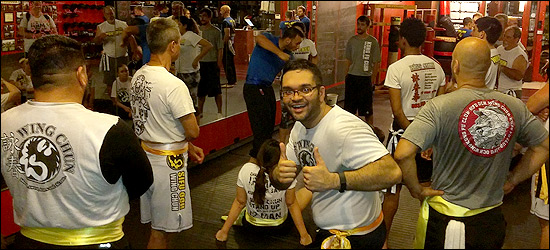
 Not to mention all of the new friendships I would develop with the truly amazing group of people that also come in to train. Quite a while back, long before I started training at Sifu Och Wing Chun I used to have something of an ego. When it came to fighting and self defense I used to think that I would be good at defending myself without needing to train. Coming in to train at Sifu Och Wing Chun showed me that I was so terribly wrong. Seeing such powerful and highly skilled individuals train with little or no ego at all, was amazing. They didn’t become upset when they were outmatched. Rather they chose to learn from their mistakes and improve their already high skillset. By spending time around my sihings and sifu, I have also adapted those qualities.
Not to mention all of the new friendships I would develop with the truly amazing group of people that also come in to train. Quite a while back, long before I started training at Sifu Och Wing Chun I used to have something of an ego. When it came to fighting and self defense I used to think that I would be good at defending myself without needing to train. Coming in to train at Sifu Och Wing Chun showed me that I was so terribly wrong. Seeing such powerful and highly skilled individuals train with little or no ego at all, was amazing. They didn’t become upset when they were outmatched. Rather they chose to learn from their mistakes and improve their already high skillset. By spending time around my sihings and sifu, I have also adapted those qualities.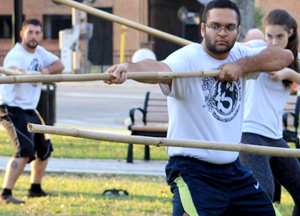 Not only has my lakeland wing chun journey been to advance my self defense skills but also in many other parts of my life. I recently opened a business and many times I’m outmatched by other businesses. I have learned to not let that bring me down and that letting go of my ego will allow me to adapt and grow. So that I am not outmatched both in the business aspect and personal aspect of my life. Humility takes a person much farther in life than ego ever can. I know that my journey has just begun and its not about the
Not only has my lakeland wing chun journey been to advance my self defense skills but also in many other parts of my life. I recently opened a business and many times I’m outmatched by other businesses. I have learned to not let that bring me down and that letting go of my ego will allow me to adapt and grow. So that I am not outmatched both in the business aspect and personal aspect of my life. Humility takes a person much farther in life than ego ever can. I know that my journey has just begun and its not about the 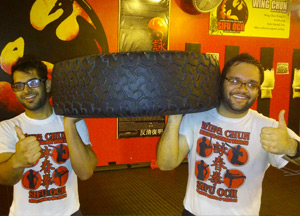 An excellent aspect about Wing Chun that Sifu Och teaches is that its really simple to learn, but it becomes harder when we over complicate it. In a way life works in the same way. It really is simple to live life until we begin to overthink situations. Which causes unnecessary stress and worrying about something that might not even happen and that sets us back. It makes life complicated and harder to live. Through my time with Sifu Och I have learned that all aspects of life should be lived by the “Keep it simple, stupid” (KISS) principle. Sifu Och has the combined knowledge and training of 4 different
An excellent aspect about Wing Chun that Sifu Och teaches is that its really simple to learn, but it becomes harder when we over complicate it. In a way life works in the same way. It really is simple to live life until we begin to overthink situations. Which causes unnecessary stress and worrying about something that might not even happen and that sets us back. It makes life complicated and harder to live. Through my time with Sifu Och I have learned that all aspects of life should be lived by the “Keep it simple, stupid” (KISS) principle. Sifu Och has the combined knowledge and training of 4 different 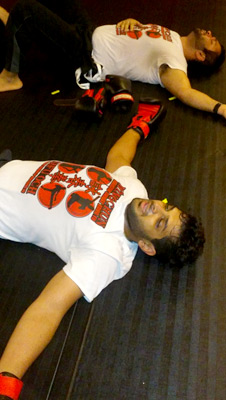 You might get tired in class and you will definitely get in shape if you come consistently and push hard. What I love about Sifu Och Wing Chun is that the martial art is not overly complicated. It doesn’t have dozens of forms to remember for each possible situation. As a matter of fact there are only three main forms in the art. Even after training for many years a student can just master one of those forms. They can incorporate it properly into their
You might get tired in class and you will definitely get in shape if you come consistently and push hard. What I love about Sifu Och Wing Chun is that the martial art is not overly complicated. It doesn’t have dozens of forms to remember for each possible situation. As a matter of fact there are only three main forms in the art. Even after training for many years a student can just master one of those forms. They can incorporate it properly into their






































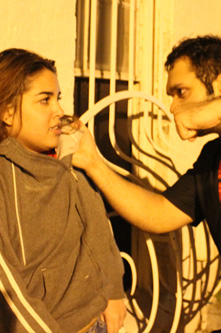 “
“ When its
When its 


